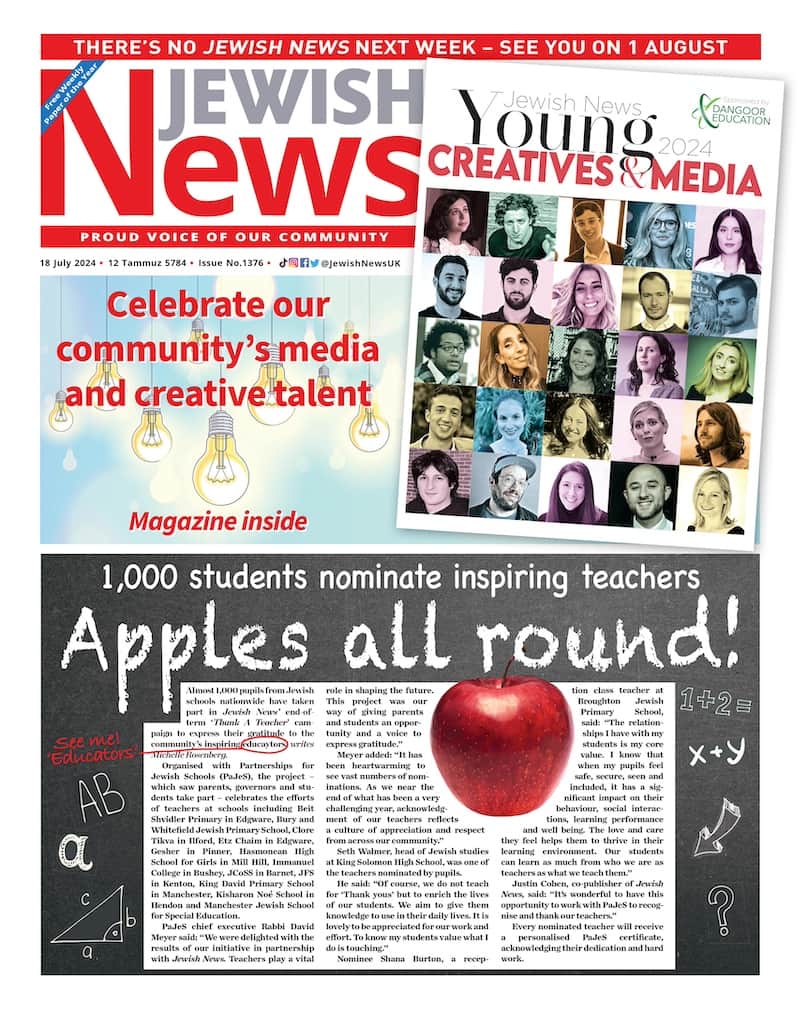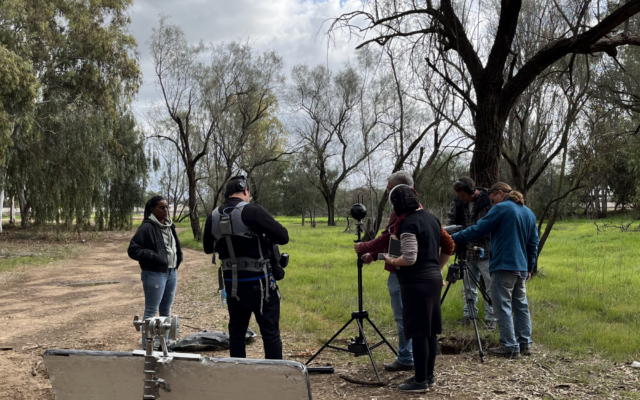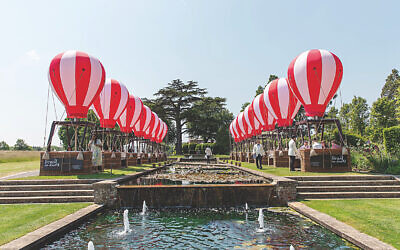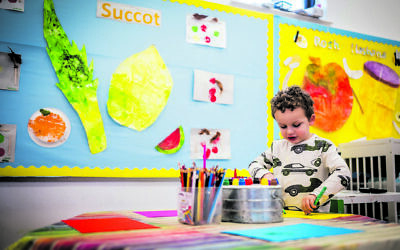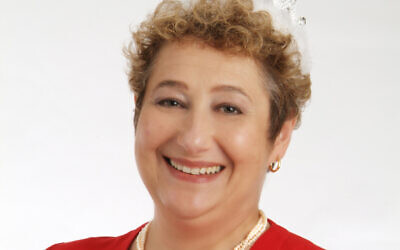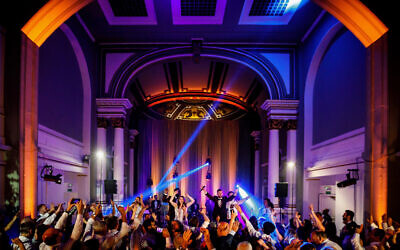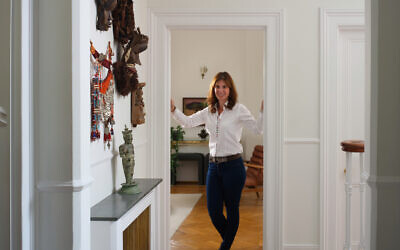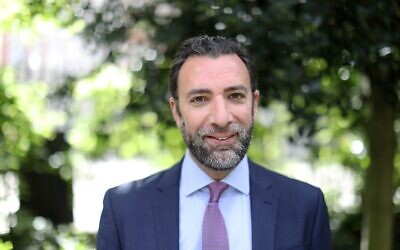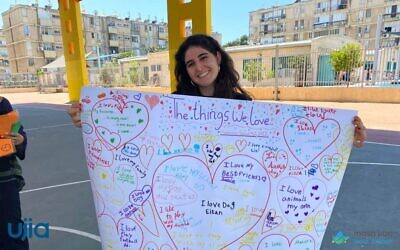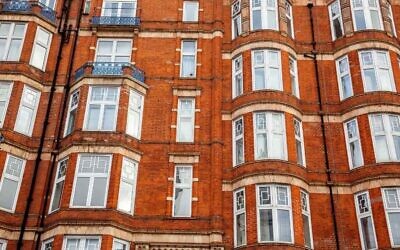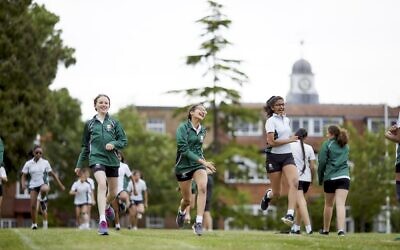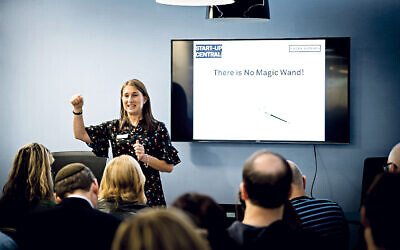OPINION: AI allows us to truly bear witness to the horrors of 7 October
A virtual reality testimony project tells the story of the 2023 atrocity in southern Israel
I have stood at many sites of mass killing. At Treblinka, I stared up, wondering how smoke laden with human flesh stained its crystal blue skies. In Rwanda, I sifted through exhumed human remains littered with children’s shoes and passport photos. I sat in green tarpaulin tents with Rohingya refugees, who showed evidence of their recent terror on their smartphones. In Guatemala, I watched sobbing widows as forensic archaeologists dug in forests to reveal their husbands’ missing bones.
I rarely visit a site of mass killing without being there with an eyewitness to its terror. It’s not that I need their eyes to see the place. I need their souls to understand its meaning. Physical places are merely spots on the landscape without the human story.
Most recently, I was at Re’im, the site where the Nova music festival took place on 6-7 of October 2023. It reminded me of the Chelmno death camp in Poland—lots of trees, a clearing, nature all around. It is the last place one would imagine such carnage.
I wound through the trees with Mazal Tazazo, an Ethiopian-Israeli Jew who had been partying that morning. Mazal is a mother who works with kids at risk. She is also training to be an architect. She loves music. She loves to dance.

Mazal was at Nova for one reason only, to have fun with her two friends, Danielle and Yochai. She ended the day unconscious with a rifle butt to the head. Fortunately, Hamas thought she was dead and spared her a bullet. When she awoke, her friends Danielle and Yochai were lying dead on either side of her.
As Mazal and I walked through Re’im, what struck me was how short the distances were between what was the main stage and the road that Hamas travelled along to reach the Kibbutzim. They likely found the three thousand young people watching the sunrise to trance music by chance. There is really nowhere to hide. Sparsely wooded forest, rough grass, and fields. Perfect for a party. Easy pickings for a massacre.
Remo Alhuziyel is half-Druze, half-Swiss. He is a Muslim, a police officer, and a proud Israeli. He stands on a mound, where with a handgun he fought off automatic weapons fired by Hamas. He commandeered a vehicle and for hours packed in frightened kids and went back and forth 20 times. He saved 200 lives. I am reminded of the righteous among the nations. They had no reason to show extraordinary courage. And yet they did. Over and over.

Mazal and Remo are two of five witnesses in the latest virtual reality testimony project I have been conducting on behalf of Israel-Is, an educational organization that explains what ‘Israel is’, in all its complexity.
I believe that to deeply understand how such terrifying tragedy and bloodshed can take place, one has to be in the physical space. Ideally, we go there and bear witness with the witnesses, to see it through their eyes, feel it through their bodies. That is not possible for most of us most of the time. Until now.
Thanks to immersive technologies, using virtual reality and conversational video AI, we can now stand on the mound with Remo, hide under the bush with Mazal. Talk to both of them, face to face.

Memory culture is adopting new forms as technology advances. There was a time when we would put a stone plaque at a physical location. More recently, we have taken our memories to the community online. Holocaust Memorial Day on the 27th of January has a significant global digital footprint with resources and programs and documentaries.
Now we are able to go places we have never been and experience them remotely. In 2016, I produced The Last Goodbye, the first hi-fidelity VR film that allowed a user to walk through the death camp of Majdanek with survivor Pinchas Gutter.
After World War II and the Holocaust, we were slow to listen to the survivors of the Holocaust. We said ‘never again’ for eight decades after the Holocaust, and yet young people born in the twenty-first century are now giving testimony as a part of the Be the Witness VR project. New mass atrocity committed against Jews, on killing sites in Israel. Now we have a new generation of survivors struggling with trauma, finding words to tell their story.
‘Be the Witness VR’ is launching in London the day after Yom HaShoah, as a stark reminder that we owe it to the survivors to listen to their stories, to be there with them. We can ill afford to wait fifty years as happened after the Holocaust to look them in the eyes and listen.
During her interview at Re’im, we asked Mazal: “How are you remembering the young people who did not make it home on the 7th October?” Being digital natives, her peers have commemorated them on TikTok and Instagram. “And what do you want to happen at this place?” Mazal thought for a second. She did not propose a physical memorial or a memorial museum. “I think the best way to remember Danielle and Yochai is to come back here and dance.”
- Stephen D. Smith is executive director Emeritus of USC Shoah Foundation and founder of the Chatterbox Group

Thank you for helping to make Jewish News the leading source of news and opinion for the UK Jewish community. Today we're asking for your invaluable help to continue putting our community first in everything we do.
For as little as £5 a month you can help sustain the vital work we do in celebrating and standing up for Jewish life in Britain.
Jewish News holds our community together and keeps us connected. Like a synagogue, it’s where people turn to feel part of something bigger. It also proudly shows the rest of Britain the vibrancy and rich culture of modern Jewish life.
You can make a quick and easy one-off or monthly contribution of £5, £10, £20 or any other sum you’re comfortable with.
100% of your donation will help us continue celebrating our community, in all its dynamic diversity...
Engaging
Being a community platform means so much more than producing a newspaper and website. One of our proudest roles is media partnering with our invaluable charities to amplify the outstanding work they do to help us all.
Celebrating
There’s no shortage of oys in the world but Jewish News takes every opportunity to celebrate the joys too, through projects like Night of Heroes, 40 Under 40 and other compelling countdowns that make the community kvell with pride.
Pioneering
In the first collaboration between media outlets from different faiths, Jewish News worked with British Muslim TV and Church Times to produce a list of young activists leading the way on interfaith understanding.
Campaigning
Royal Mail issued a stamp honouring Holocaust hero Sir Nicholas Winton after a Jewish News campaign attracted more than 100,000 backers. Jewish Newsalso produces special editions of the paper highlighting pressing issues including mental health and Holocaust remembrance.
Easy access
In an age when news is readily accessible, Jewish News provides high-quality content free online and offline, removing any financial barriers to connecting people.
Voice of our community to wider society
The Jewish News team regularly appears on TV, radio and on the pages of the national press to comment on stories about the Jewish community. Easy access to the paper on the streets of London also means Jewish News provides an invaluable window into the community for the country at large.
We hope you agree all this is worth preserving.

